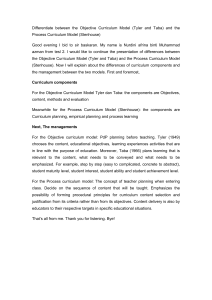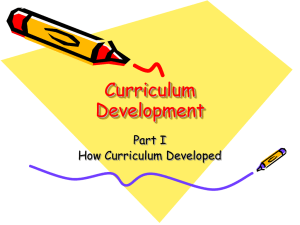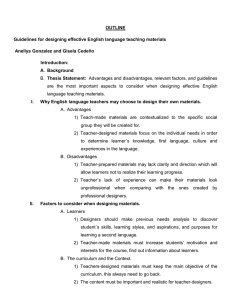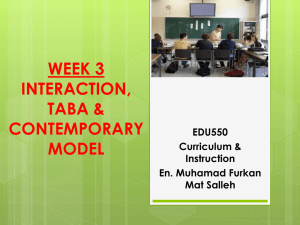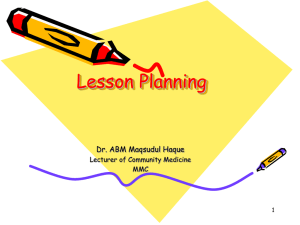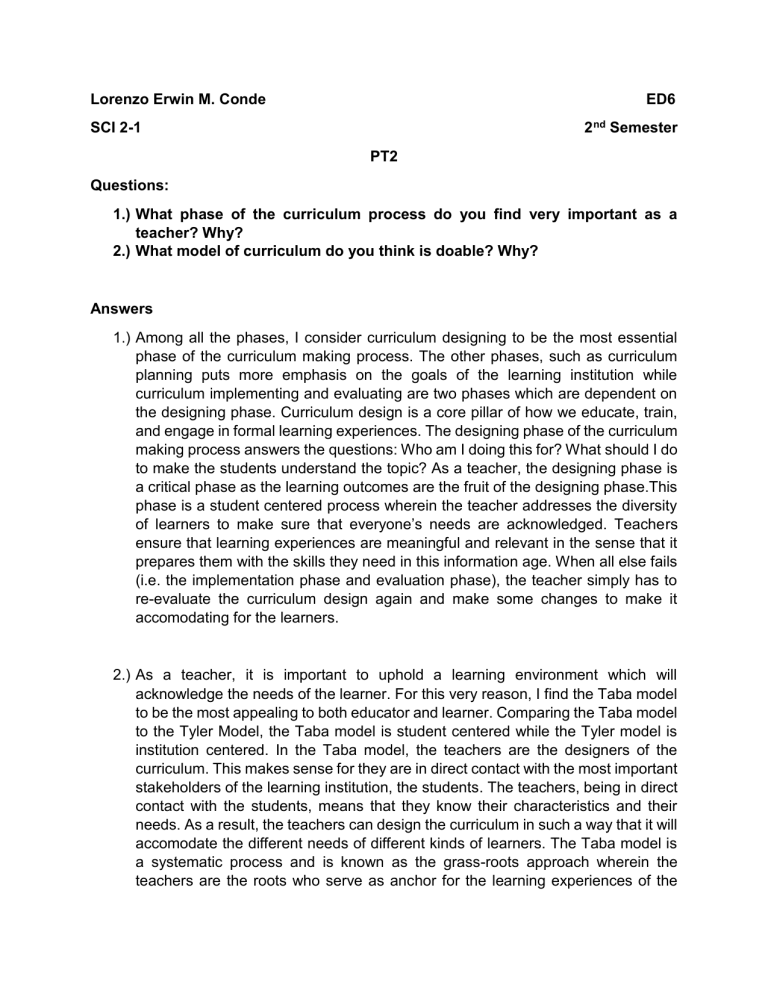
Lorenzo Erwin M. Conde ED6 2 nd Semester SCI 2-1 PT2 Questions: 1.) What phase of the curriculum process do you find very important as a teacher? Why? 2.) What model of curriculum do you think is doable? Why? Answers 1.) Among all the phases, I consider curriculum designing to be the most essential phase of the curriculum making process. The other phases, such as curriculum planning puts more emphasis on the goals of the learning institution while curriculum implementing and evaluating are two phases which are dependent on the designing phase. Curriculum design is a core pillar of how we educate, train, and engage in formal learning experiences. The designing phase of the curriculum making process answers the questions: Who am I doing this for? What should I do to make the students understand the topic? As a teacher, the designing phase is a critical phase as the learning outcomes are the fruit of the designing phase.This phase is a student centered process wherein the teacher addresses the diversity of learners to make sure that everyone’s needs are acknowledged. Teachers ensure that learning experiences are meaningful and relevant in the sense that it prepares them with the skills they need in this information age. When all else fails (i.e. the implementation phase and evaluation phase), the teacher simply has to re-evaluate the curriculum design again and make some changes to make it accomodating for the learners. 2.) As a teacher, it is important to uphold a learning environment which will acknowledge the needs of the learner. For this very reason, I find the Taba model to be the most appealing to both educator and learner. Comparing the Taba model to the Tyler Model, the Taba model is student centered while the Tyler model is institution centered. In the Taba model, the teachers are the designers of the curriculum. This makes sense for they are in direct contact with the most important stakeholders of the learning institution, the students. The teachers, being in direct contact with the students, means that they know their characteristics and their needs. As a result, the teachers can design the curriculum in such a way that it will accomodate the different needs of different kinds of learners. The Taba model is a systematic process and is known as the grass-roots approach wherein the teachers are the roots who serve as anchor for the learning experiences of the students while the students are the grass which grows as they accumulate learning experiences.
